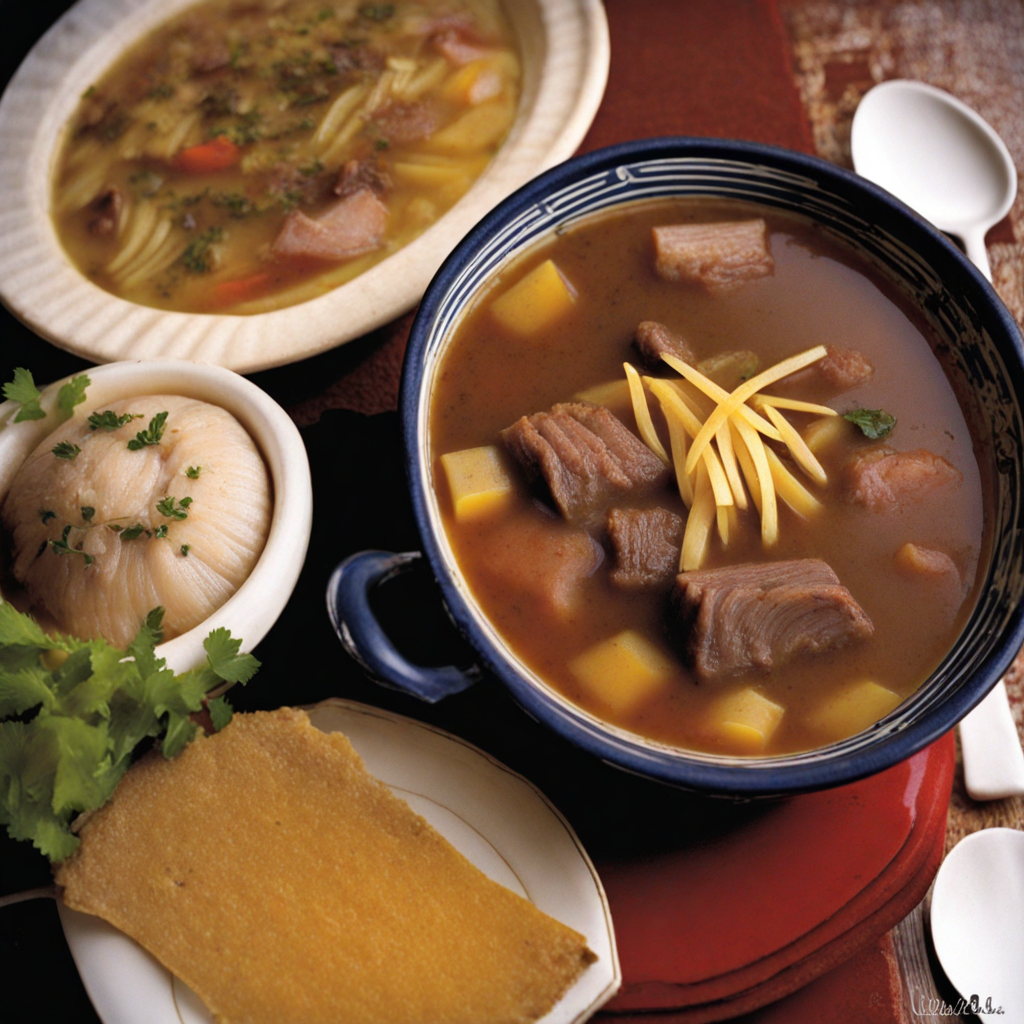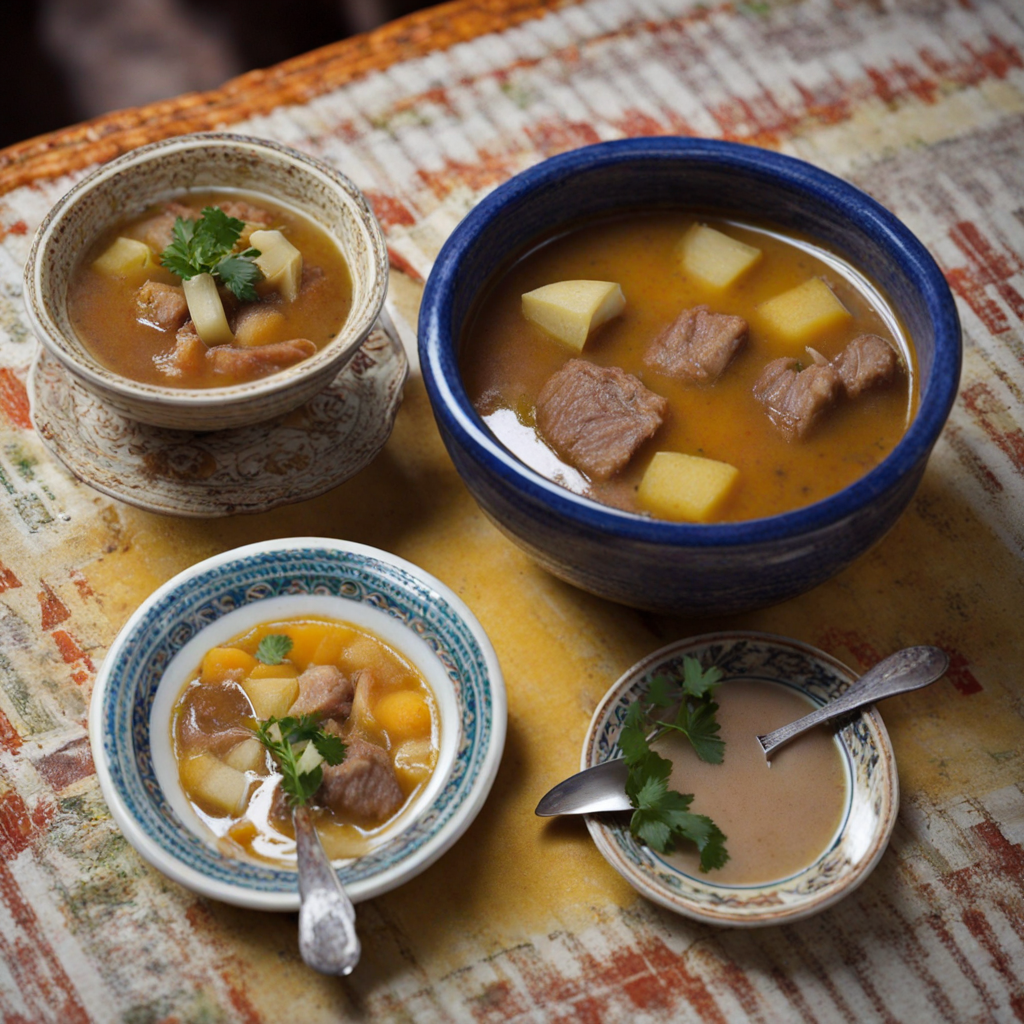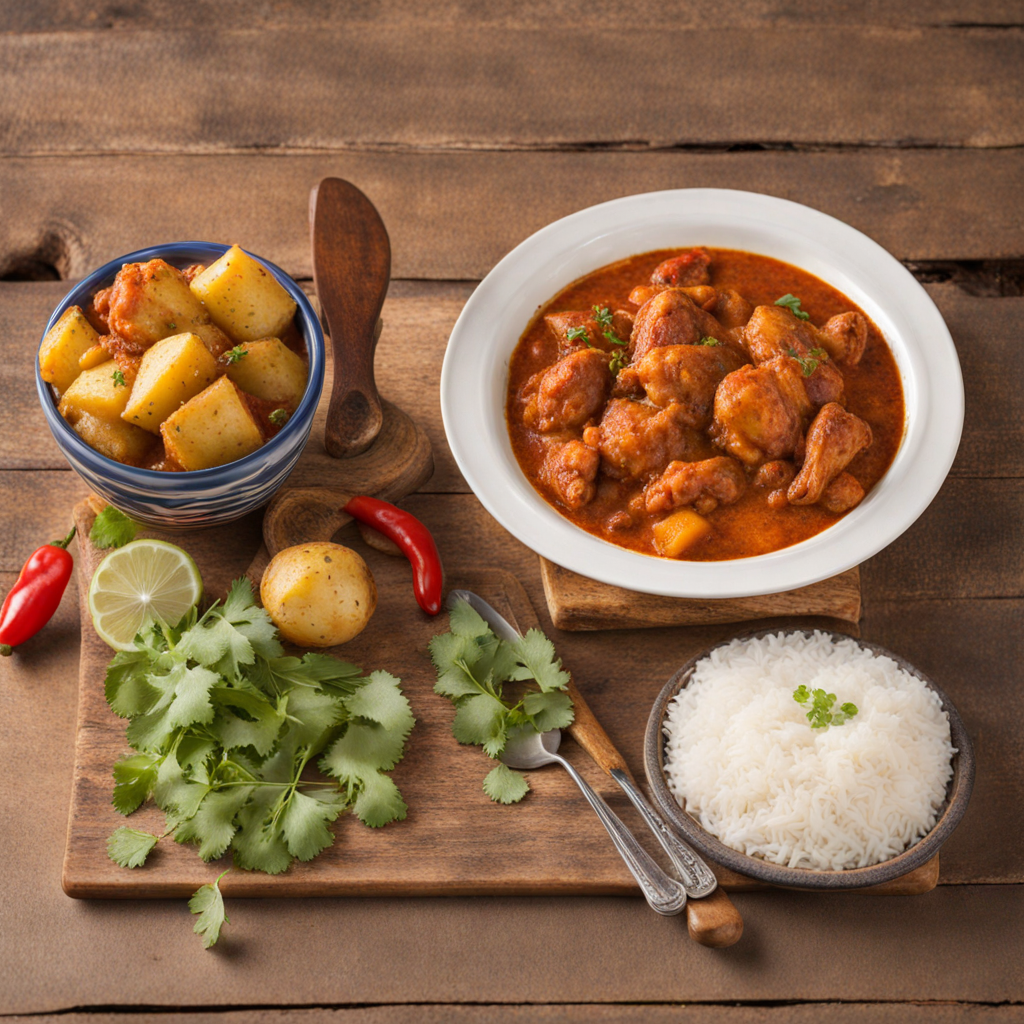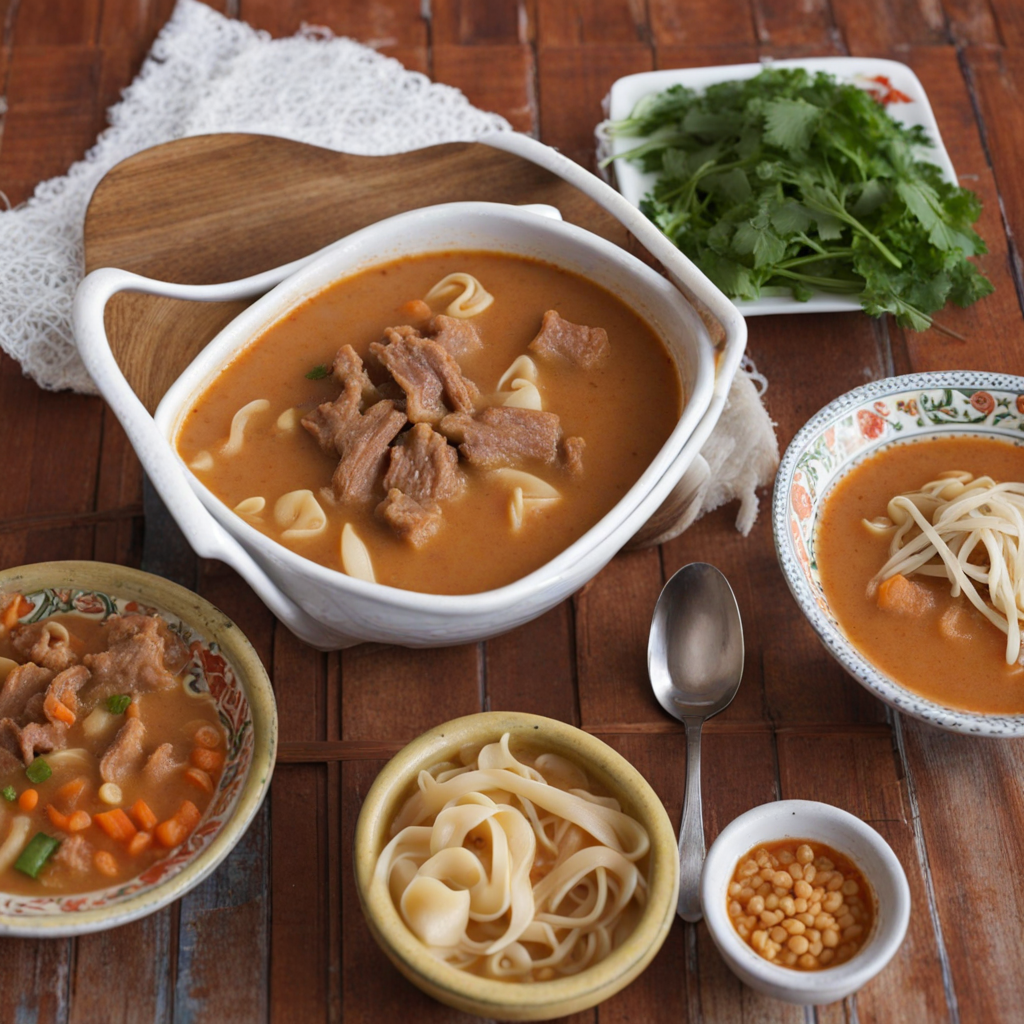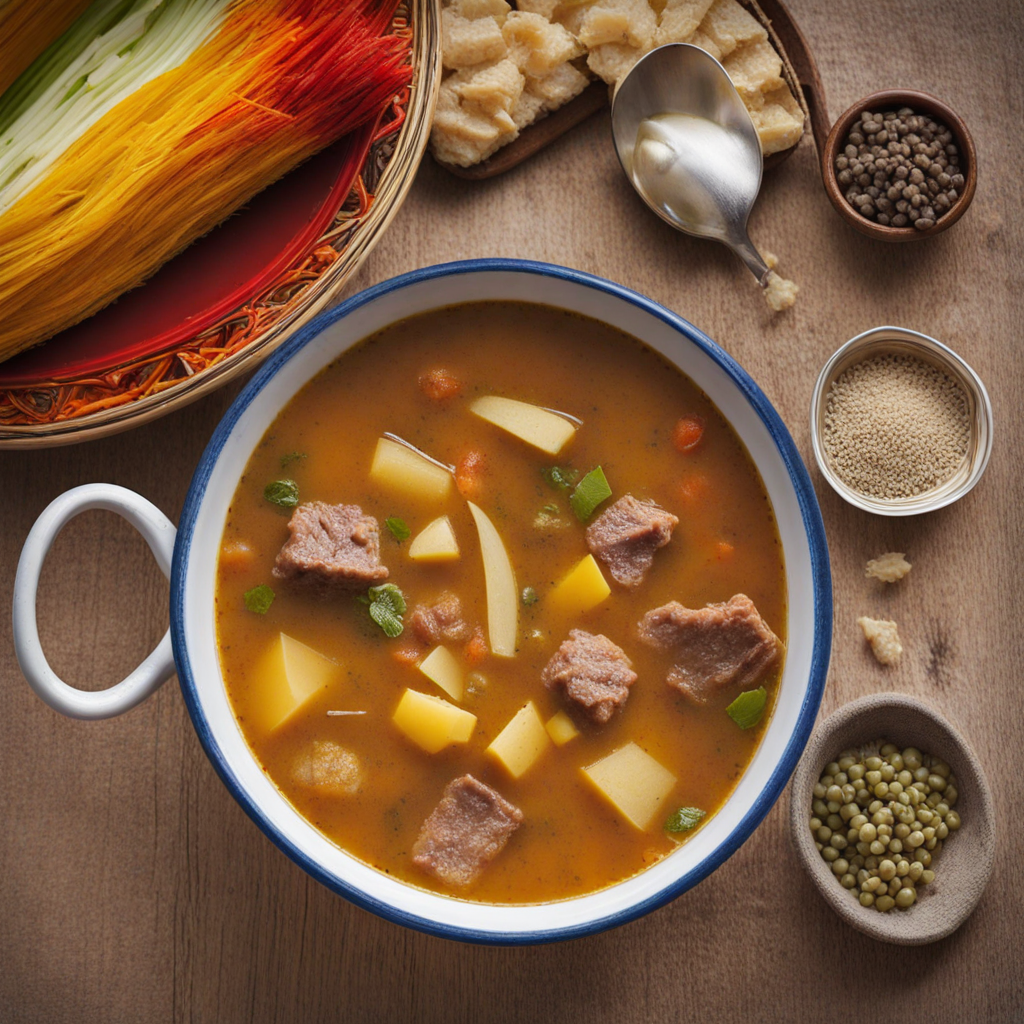Chairo Paceño
Chairo Paceño is a traditional Bolivian soup that hails from the high-altitude regions, particularly the city of La Paz. This hearty dish is a reflection of the country's rich culinary heritage and is characterized by its unique combination of flavors and textures. At its core, Chairo Paceño is made with a base of meat, typically lamb or beef, which is simmered to perfection, allowing the flavors to meld beautifully. The dish is further enriched with an array of ingredients, including potatoes, carrots, and various local herbs, creating a comforting and satisfying meal that warms the soul. The defining feature of Chairo Paceño is its use of chuño, a traditional Andean freeze-dried potato that adds a distinctive taste and chewy texture to the soup. This ingredient not only contributes to the dish's authenticity but also provides a glimpse into the ancient culinary techniques of the region. The dish is seasoned with spices such as cumin and garlic, which enhance the overall flavor profile, making each spoonful a delightful experience. Served piping hot, Chairo Paceño is often accompanied by a side of fresh bread, allowing diners to soak up the flavorful broth. Each region may have its own variation of Chairo Paceño, but it is universally appreciated for its nourishing qualities and robust flavors. This dish embodies the spirit of Bolivian cuisine, where indigenous ingredients and traditions come together to create something truly special. For those seeking to explore new tastes, Chairo Paceño offers a unique opportunity to experience the culinary richness of Bolivia, celebrating both the simplicity and complexity of its ingredients.
How It Became This Dish
Chairo Paceño: A Culinary Emblem of Bolivia Chairo Paceño is more than just a dish; it is a vibrant testament to the rich cultural tapestry of Bolivia, particularly of the highland region around La Paz. This traditional soup, characterized by its hearty ingredients and comforting flavors, offers a glimpse into the historical and social nuances of Bolivian life. Understanding Chairo Paceño requires a journey through its origins, cultural significance, and its evolution over time. #### Origins of Chairo Paceño The roots of Chairo Paceño can be traced back to the Indigenous Aymara people who have inhabited the altiplano region of Bolivia for centuries. The Aymara have a deep connection to their land, which is reflected in their culinary practices. The dish is primarily made from leftover lamb or beef, potatoes, and a variety of Andean grains, especially barley. The use of these ingredients speaks to the agricultural practices of the Aymara, who cultivated hardy crops like potatoes and quinoa in the challenging high-altitude climate. The name "Chairo" derives from the Aymara word "ch'airo," which translates to "a dish made with leftover meat." This aspect underscores the resourcefulness of the Indigenous peoples, who utilized every part of the animal and made the most of their limited resources, particularly in the context of subsistence farming. The soup often includes chuño, freeze-dried potatoes that can be stored for long periods, making it an ideal dish for the harsh conditions of the altiplano. #### Cultural Significance Chairo Paceño is emblematic of Bolivian identity, particularly in the La Paz region. It is often served during communal gatherings, celebrations, and religious festivals, reinforcing social bonds among families and communities. For many Bolivians, sharing a bowl of Chairo Paceño is an act of hospitality and warmth, a way to bring people together over a shared meal. The dish is also associated with the rituals and traditions of Andean culture. During the Festival of the Virgin of Socavón, a significant religious event in Oruro, Chairo Paceño is commonly prepared as part of the offerings to honor the Virgin Mary. This connection to spirituality and tradition enhances its significance, making it not just a meal, but a cultural artifact that encapsulates the beliefs and values of the people. Moreover, Chairo Paceño reflects the fusion of various cultural influences in Bolivia. Following Spanish colonization, the culinary landscape shifted as new ingredients and cooking techniques were introduced. The incorporation of spices, such as cumin and garlic, along with the use of meat, demonstrates a blend of Indigenous and Spanish culinary traditions. This fusion has continued to evolve over the centuries, resulting in a dish that honors its roots while adapting to contemporary tastes and practices. #### Development Over Time As Bolivia has experienced political and social changes, so too has Chairo Paceño evolved. The late 20th century saw a resurgence of Indigenous pride and cultural identity, particularly with the rise of political movements advocating for the rights of Indigenous peoples. This renewed appreciation for traditional foods has led to a greater recognition of Chairo Paceño as a symbol of cultural heritage. In urban areas, particularly in La Paz, Chairo Paceño has gained popularity in restaurants and food markets, often attracting both locals and tourists. Chefs have begun to experiment with the traditional recipe, incorporating modern culinary techniques while still respecting the essence of the dish. For instance, some contemporary versions may feature gourmet ingredients or innovative presentations, appealing to a broader audience while still honoring its traditional roots. Furthermore, the global interest in Andean cuisine has spurred the exploration of Chairo Paceño beyond Bolivia’s borders. Food festivals and culinary events have introduced this dish to a wider audience, showcasing its complexity and the story behind it. As a result, Chairo Paceño has become a culinary ambassador for Bolivia, representing the country's rich agricultural heritage and cultural diversity. #### Ingredients and Preparation At its core, the preparation of Chairo Paceño revolves around its key ingredients, which include: 1. Meat: Traditionally, leftover lamb or beef is used, reflecting the resourcefulness of the Aymara people. The meat is simmered to create a rich broth that forms the base of the soup. 2. Potatoes: A staple of Andean cuisine, potatoes in various forms—fresh or chuño—provide substance and depth to the dish. 3. Grains: Barley is commonly used, adding texture and nutrition. 4. Vegetables: Carrots, onions, and sometimes corn contribute to the flavor and nutritional value. 5. Seasonings: Spices such as cumin, garlic, and salt enhance the overall taste, with some variations including ají, a spicy chili pepper, for an added kick. The preparation begins with the meat being boiled until tender, after which the vegetables and grains are added. The soup is allowed to simmer, allowing flavors to meld and deepen. Traditionally, it is served hot, often accompanied by a side of fresh bread or rice. #### Conclusion Chairo Paceño stands as a culinary icon of Bolivia, embodying the history, culture, and resilience of its people. Its origins rooted in Indigenous traditions, its cultural significance reinforced through communal ties, and its adaptability over time showcase the dynamic nature of Bolivian cuisine. As this dish continues to evolve, it remains a powerful symbol of identity and heritage, inviting both locals and visitors to savor not just a meal, but a rich narrative steeped in the traditions and stories of the Andean highlands. Whether enjoyed in a bustling market or a family home, Chairo Paceño provides a delicious connection to Bolivia's past and present, making it a treasured dish in the hearts and homes of many.
You may like
Discover local flavors from Bolivia


